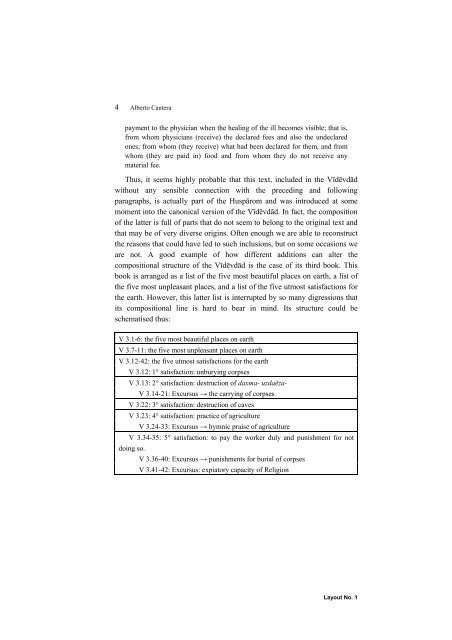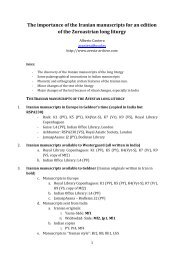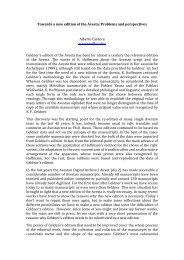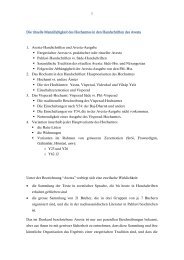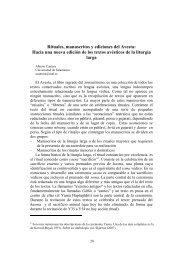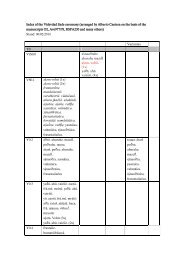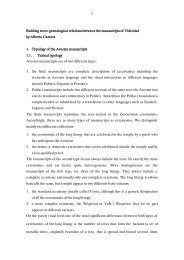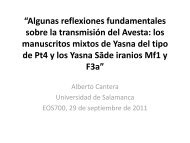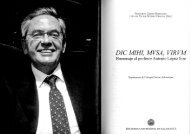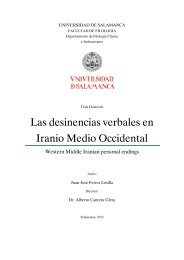Medical Fees and Compositional Principles in the Avestan VÄ«dÄvdÄd
Medical Fees and Compositional Principles in the Avestan VÄ«dÄvdÄd
Medical Fees and Compositional Principles in the Avestan VÄ«dÄvdÄd
You also want an ePaper? Increase the reach of your titles
YUMPU automatically turns print PDFs into web optimized ePapers that Google loves.
4 Alberto Cantera<br />
payment to <strong>the</strong> physician when <strong>the</strong> heal<strong>in</strong>g of <strong>the</strong> ill becomes visible; that is,<br />
from whom physicians (receive) <strong>the</strong> declared fees <strong>and</strong> also <strong>the</strong> undeclared<br />
ones; from whom (<strong>the</strong>y receive) what had been declared for <strong>the</strong>m, <strong>and</strong> from<br />
whom (<strong>the</strong>y are paid <strong>in</strong>) food <strong>and</strong> from whom <strong>the</strong>y do not receive any<br />
material fee.<br />
Thus, it seems highly probable that this text, <strong>in</strong>cluded <strong>in</strong> <strong>the</strong> Vīdēvdād<br />
without any sensible connection with <strong>the</strong> preced<strong>in</strong>g <strong>and</strong> follow<strong>in</strong>g<br />
paragraphs, is actually part of <strong>the</strong> Huspārom <strong>and</strong> was <strong>in</strong>troduced at some<br />
moment <strong>in</strong>to <strong>the</strong> canonical version of <strong>the</strong> Vīdēvdād. In fact, <strong>the</strong> composition<br />
of <strong>the</strong> latter is full of parts that do not seem to belong to <strong>the</strong> orig<strong>in</strong>al text <strong>and</strong><br />
that may be of very diverse orig<strong>in</strong>s. Often enough we are able to reconstruct<br />
<strong>the</strong> reasons that could have led to such <strong>in</strong>clusions, but on some occasions we<br />
are not. A good example of how different additions can alter <strong>the</strong><br />
compositional structure of <strong>the</strong> Vīdēvdād is <strong>the</strong> case of its third book. This<br />
book is arranged as a list of <strong>the</strong> five most beautiful places on earth, a list of<br />
<strong>the</strong> five most unpleasant places, <strong>and</strong> a list of <strong>the</strong> five utmost satisfactions for<br />
<strong>the</strong> earth. However, this latter list is <strong>in</strong>terrupted by so many digressions that<br />
its compositional l<strong>in</strong>e is hard to bear <strong>in</strong> m<strong>in</strong>d. Its structure could be<br />
schematised thus:<br />
V 3.1-6: <strong>the</strong> five most beautiful places on earth<br />
V 3.7-11: <strong>the</strong> five most unpleasant places on earth<br />
V 3.12-42: <strong>the</strong> five utmost satisfactions for <strong>the</strong> earth<br />
V 3.12: 1° satisfaction: unbury<strong>in</strong>g corpses<br />
V 3.13: 2° satisfaction: destruction of daxma- uzdaēza-<br />
V 3.14-21: Excursus → <strong>the</strong> carry<strong>in</strong>g of corpses<br />
V 3.22: 3° satisfaction: destruction of caves<br />
V 3.23: 4° satisfaction: practice of agriculture<br />
V 3.24-33: Excursus → hymnic praise of agriculture<br />
V 3.34-35: 5° satisfaction: to pay <strong>the</strong> worker duly <strong>and</strong> punishment for not<br />
do<strong>in</strong>g so.<br />
V 3.36-40: Excursus → punishments for burial of corpses<br />
V 3.41-42: Excursus: expiatory capacity of Religion<br />
Layout No. 1


